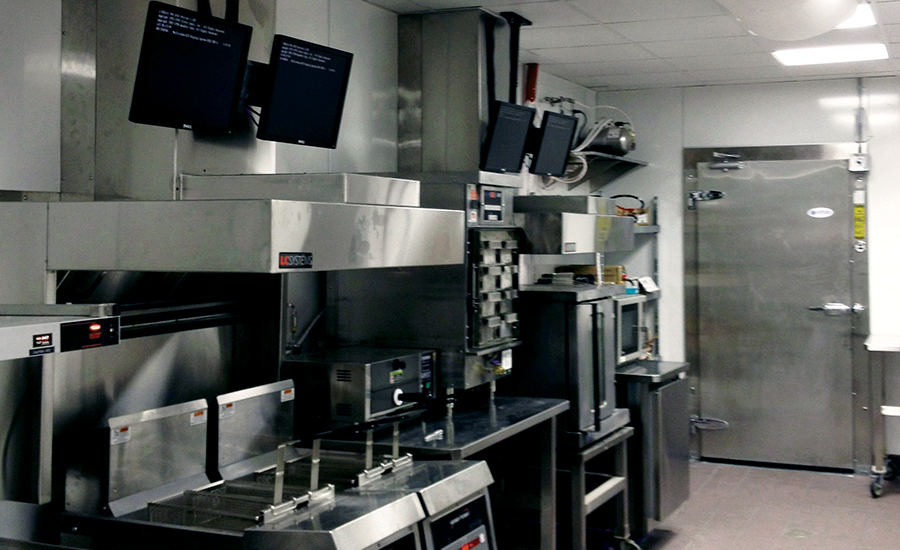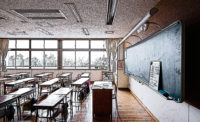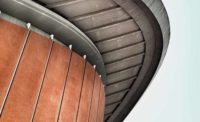Commercial kitchen ventilation (CKV) has been a challenge to mechanical engineers for years. Part of the challenge comes from the fact that the mechanical engineer is normally not the “kitchen consultant.” Significant coordination is required to ensure that the kitchen ventilation is integrated with what the kitchen exhaust is doing at any given time based on the cooking activities in the kitchen.
The exhaust is dictated by the usage of the kitchen equipment, which can vary based not only on the type of food prepared throughout the day and night but also on the types of hoods selected by the kitchen consultant, who is generally not a professional mechanical engineer. The tradition of having such a consultant as the entity to select and specify the hoods has been debated at various times over the past several years since the hood selection does indeed affect the kitchen ventilation performance.
Codes, Standards, Guidelines
A good starting point for any design is to understand the current codes, standards, and industry guidelines. CKV has a few codes and standards that are good to review at the beginning of any project to ensure the design is compliant and takes into consideration all the required and recommended criteria.
In addition to codes and standards, there are industry guidelines and best practice recommendations by many hood and make-up air unit manufacturers that are good to consider. Some building owners such as chain restaurants and large hotel chains with kitchens may also have their own internal guidelines they require based on their unique cooking applications. It is always wise to have a discussion with the architect, owner, kitchen consultant, and local code authority having jurisdiction (AHJ) early in the design phases of a project to be clear with all the criteria that must be considered.
Some municipalities may have ordinances regarding where grease hood duct termination points are allowed and not allowed relative to property lines and other factors. These codes, standards, guidelines, best practices, and local ordinances may indeed impact where a kitchen is located within a building to ensure lowest energy, maintainability, as well as lowest first cost of construction.
Design Challenges
It is generally good practice to talk to the client about some of the problems they may have had in the past, if they have had experience with previous kitchens. It is good to have a discussion with the kitchen consultant also to gain some insights into what they have experienced in past projects. These discussions allow the owner and kitchen consultant the opportunity to bring out ongoing concerns and/or insights. More importantly, it draws them into a discussion with the professional mechanical engineer from the beginning, so that the CKV does indeed meet the needs of the project. More often than not, the mechanical engineer is the one person on the CKV design team who understands the complexity of engineering a CKV system that is fully integrated with other trade requirements.
Other challenges that come up in CKV designs can include, but are not necessarily limited to, the following issues.
-
Effective capture of the heat, grease laden air, and smoke from the appliances under the hood due to improper hood selection or sizing by the kitchen consultant who is also selecting the cooking equipment. The ability of the hood to function properly depends not only on the layout of the cooking equipment under the hood, but also on the air currents from the supply air diffusers that may disrupt the hood’s theoretical capturing ability. Care must be taken to understand the hood type and the capture velocities that the hood is designed for. ARCOM MasterSpec has a section for food service equipment, and the mechanical engineer needs to review this specification with the “kitchen consultant” to ensure there is clear, complete, concise, and correct integration of the hood controls with the supply air and make-up air controls specified by the mechanical engineer.
-
Comfort within the kitchen which is affected not only by the normal heating and cooling loads of a space but also by radiant heat from the kitchen appliances. The engineer needs to have a discussion with the kitchen consultant and the users of the kitchen, if possible, to understand where the workers will be in the kitchen. There may be certain spots in the kitchen where it would be appropriate to have some spot cooling if such directed airflow would not disrupt any of the exhaust hood functionality. With the growing number and variety of food types being installed in specialty restaurants, the challenge of providing comfort for the chefs and other kitchen staff becomes more challenging for the mechanical engineer. It is essential to set the criteria early in the project so that the required functional performance of the CKV system can be engineered with proper controls.
-
Space pressure relationships when multiple hoods and VAV strategies are used based on cooking demand requires varying the make-up air volume from the ceiling diffusers. Variable air flow in a kitchen can only be effective when appropriate controls are installed to measure airflow. What isn’t measured directly can’t be controlled directly. Any open loop indirect-type control depends on testing and balancing setup that is likely not going to maintain kitchen pressure relationships at all times unless some level of space differential pressure control is installed. When any demand ventilation control strategy is brought up early in a design phase, the mechanical engineer needs to be alert as to how the exhaust is varied so that the supply air can also be controlled accordingly.
-
Diffuser type selection and locations that can handle the amount of make-up air required in the kitchen, based on the hood type selected, to give effective air distribution without affecting the effectiveness of the hood.
Odor control from the kitchen to adjacent spaces is a unique HVAC challenge in and of itself. Space differential pressurization to control the odor migration into other areas of a building, even into the dining area, can be a challenge if a differential pressure controller of some sort is not installed. The testing and balancing may work at the maximum point of a system supply and exhaust setting, but once multiple hoods or VAV exhaust systems are operated, the pressure relationship between space can vary quickly if not directly controlled in some manner.
Supply Air Devices
One of the key decisions in CKV engineering is the selection of the supply air diffuser device. This decision alone can make the CKV installation work well or not work well. It makes little sense to look at only first cost for the supply air diffuser selection, since this decision is more than just an architectural hole-cover aesthetics decision. A simple, inexpensive (cheap) perforated diffuser may look acceptable; however, the air patterns of similar looking perforated diffusers can vary significantly if not specified as a performance specification with proper criteria.
There are a variety of supply air devices on the market that have been used in kitchens. As noted above, many times engineers will use a basic inexpensive (cheap) perforated diffuser. These may work in some kitchens, but many times the volume of air is such that they simply do not have the capacity to handle the large volumes of air at low throws, pressure loss, and noise required. An inexpensive (cheap) perforated diffuser may look like a similar high-volume laminar flow-type diffuser, but there is a big difference in performance. The cliché “you get what you pay for” certainly applies to diffuser selections for CKV.
Some supply air diffusers that are linear can indeed work well in a CKV application if the throws are in the right direction, such that they do not affect the hood capture ability. Another common diffuser in kitchens is the basic louver faces diffuser, which again can work well if attention is given to direction of air throw. The plaque type diffuser, when properly sized and selected for air distribution direction, can be a very economical and effective selection for CKV applications where the supply air varies based on number of hoods or VAV type exhaust air. Some hoods have integrated supply air diffusers; however, the mechanical engineer needs to have a say in how these are specified as they will indeed affect the effectiveness of the total CKV design.

FIGURE 1. The engineer needs to discuss employee location with the kitchen consultant and the users of the kitchen, if possible. There may be certain areas where spot cooling would be appropriate if it would not disrupt any of the exhaust hood functionality. (Photo courtesy of DuctSox)
A somewhat newer technology that is being used for kitchens requiring high volumes of air and short throw distances is the use of fabric air distribution products (see Figure 1). This type of product is used in laboratories for similar reasons and can be removed easily for cleaning. It is also easily modified, if needed, without replacing the entire diffuser. These can also be used in some retrofit projects where older diffusers are not appropriate for the new kitchen layout and capacity requirements. Fabric diffusers are also good for both constant volume and variable volume air flow.
Grease Management
One of the most important aspects and challenges of CKV is grease management. This, of course, starts with the cooking appliances and method of cooking. Grease that splatters with a high velocity of a cooking surface or out of a pan does not have a chance of getting captured in a hood, and that is a different discussion not related to the HVAC. The smaller particulates of grease and smoke that are captured effectively in a hood are first intended to be captured in the hood filters. These must be maintained just like any other filters and the selection of the filters will determine how much of the grease gets into the duct system.
Once grease is indeed past the hood filters, the design intent is to keep the velocity in the ducts such that the grease keeps moving through the duct and out of the building. However, the reality is that grease and smoke particulates do get past the filters. Codes require cleanouts in a kitchen hood exhaust application for a reason. A maintenance program that diligently includes inspection and cleaning of the hood exhaust duct is a good practice for the safety of the building to avoid a grease fire in the duct.
Grease management in the exhaust ducts and at the discharge of the exhaust fans on the roof or sidewall takes multi-discipline integrated design and coordination. It is not acceptable nor professionally responsible for an architect and kitchen consultant to do the design of the kitchen without comprehensive discussions with the mechanical engineer from the beginning. Too many times, the mechanical engineer is given the kitchen consultant’s layout and hood requirements late in the job and then told to make it work. This is irresponsible of the architect and owner, too. Although grease management is not necessarily a point of CKV, it is a factor that needs discussion for the safe and maintainable installation of the exhaust duct and fans. Many installations are hastily designed (not necessarily engineered) and installed with ducts that are hard to access and fan locations that are near impossible to access for service on walls and on ducts up the sides of buildings. Grease management within the exhaust duct systems is as important as any other aspect of commercial kitchen design for the safety of the occupants in the facility, and it needs to be thoroughly engineered by the professional engineer of record.
Once the grease and smoke particulates reach the exhaust fan, there are two concerns. Caking out of the particulates on the fan wheel blades, which in and of itself can be a hazard, will also cause imbalance in the fan wheel, which leads to vibration.
The discharge of the grease fan is intended to be up and away from the roof. The velocity of this exhaust will affect how effective this is. Just as with lab exhaust high plume fans, the engineer must take into account the cross-wind velocity that will influence the effectiveness of the exhaust fan. ASHRAE has wind velocity data, similar to that of outside air temperature conditions, that must be considered and accounted for in CKV designs.
Commissioning
Commissioning of CKV systems is essential on every project with any degree of sophistication that uses hoods and varies the amount of air being exhausted from multiple hoods. Without commissioning of the CKV system, controls, and supply and exhaust equipment over the entire range of operation, there will indeed be issues with odor control, hood effectiveness, space pressure control, and comfort.
Conclusion
Commercial kitchen ventilation that takes into consideration hood capture effectiveness, supply air distribution air currents, comfort, energy used to condition make-up air, space differential pressure, and all of the associated controls needed to ensure the kitchen is indeed “ventilated” properly at all times. It is not an easy engineering task. It’s a challenge and not a place to skimp on first cost under any fake “value engineering” keep-it-simple schemes. It takes good engineering and proper control to properly engineer and operate a commercial ventilation system.




